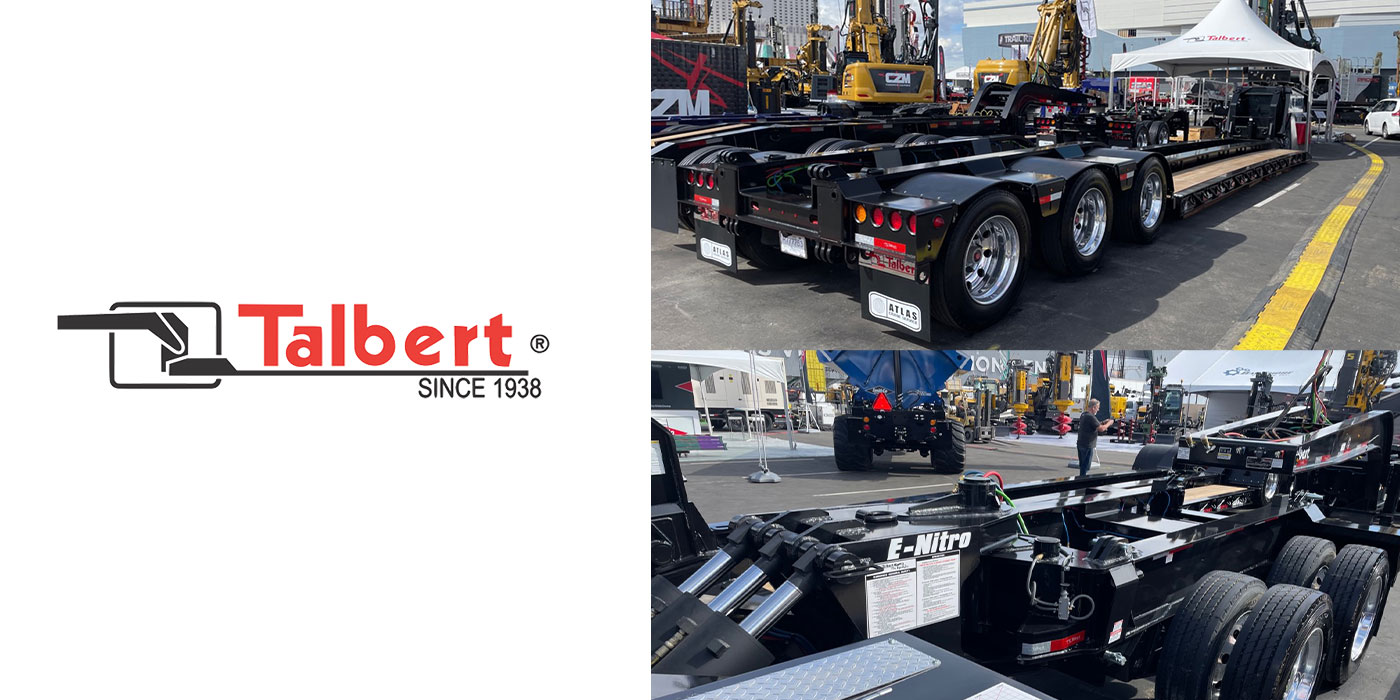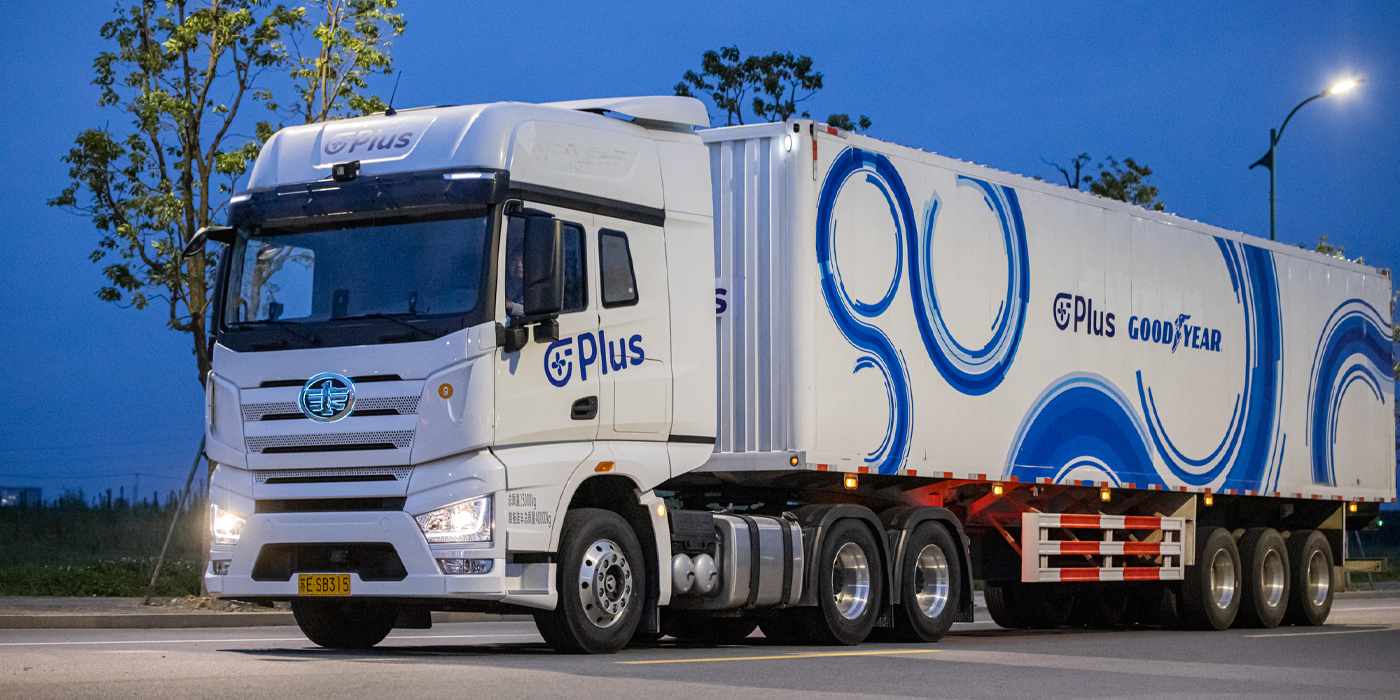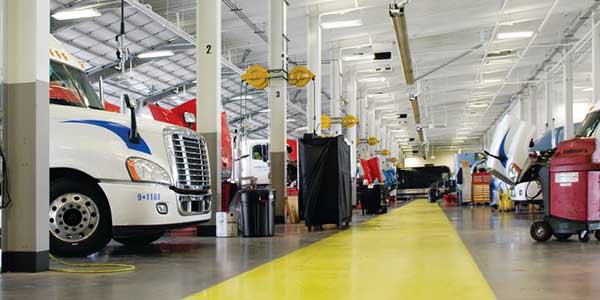For fleets that are considering wide based singles for trailers, there are two main advantages to replacing dual tires with one, note the experts at Meritor Tire Inflation System by Pressure Systems International (PSI). First of all, there is the weight savings, which can add up to as much as 1,300 lbs. depending on whether a fleet is replacing both the drive and trailer tires and if aluminum wheels are replacing steel. This weight savings can be leveraged to add cargo and/or increases fuel efficiency. Fuel economy is also achieved because rolling resistance is lessened. Other advantages include: easier maintenance, the elimination of the need to match duals, improved brake cooling, improved ride (wide tires are not susceptible to normal road rutting conditions that usually occur over time).
It is important to understand that one 445/50R22.5 is not double two 11R22.5 tires. A conventional trailer tire size is 11R22.5 and the most common wide base tire size is 445/50R22.5. So using two 11R22.5 tires gives an overall tire footprint of 124 sq. in. Using one 445/50R22.5 has a footprint of 111 sq. in. (that’s 10% less contact area).
Wide base tires do more “work” than dual tires, which means the tire is more sensitive to running overloaded and underinflated. Heat is also a big issue, particularly if they are running underinflated. Even running at 10% underinflation will result in premature tire removal because of irregular wear and tire durability issues. Most fleets running these wide base tires use an automatic tire inflation system to ensure that the inflation pressure of the 445/50R22.5 tires is maintained, according to PSI.
The fleets that spec’ wide base singles usually do so to improve fuel economy. There have been reports of a fuel savings from 1% to 4% with wide base singles, but with all the variables for each fleet, vehicle and driver, these numbers can fluctuate. For fleets that haul loads that gross out in weight, like grain and products, the additional weight savings of wide base tires can increase payload and, subsequently, daily revenues.
Do trailer tires wear more slowly than tires on other positions?
Some do, some don’t, say the tire experts at Bridgestone. In many cases, trailer tires do have a slower rate of wear than other tires. There are several reasons for that:
No steering. Unlike steer tires, which generally wear fastest, trailer tires don’t steer the vehicle (except when alignment is way off, which we’ll discuss in a future article). So, they’re not subjected to the huge forces needed to change the course of an 80,000-lb. truck.
No drive torque. Unlike drive tires, trailer tires aren’t being driven by the engine, so slip and engine torque aren’t boosting their wear rates.
Relatively light loads. With today’s weight restrictions, tandem drive and trailer tires are not likely to carry more than 4,250 lbs. each (5,000 lbs. on single axles). That’s over 29% less than the 6,000 lbs often found on steers, and usually results in much slower wear.
Could we use steer-type tires on our trailers?
Certainly, but you’ll need to do a cost per mile analysis to determine the benefits of switching to a deeper tread steer-type tire. Deeper treads may also produce other problems: With severe turning side forces, a deep tread can act as a lever, increasing internal stresses, especially on belts, and may result in increased numbers of belt separations. At the same time, if turning side forces are high, steer radials that incorporate decoupling rib structures may suffer damage to these decoupling ribs.
What about rotating steer and drive tires back to trailers? One fleet reduced its cost per mile by moving Bridgestone ultra-deep tread M726 drive radials (30/32nds original tread depth) back to trailer positions with about 8-12/32nds of tread remaining.
All tires are designed for retreading. So you can choose the tire that works best for you, then retread it for drive or trailer positions. Of course, some fleets run nothing but retreads on their trailers and enjoy great success with them, Bridgestone added.




